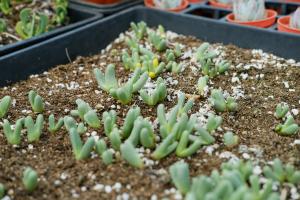Introduction
Freshwater ecosystems are home to a wide variety of fish and plants. These ecosystems, found in rivers, lakes, and wetlands, have a unique set of environmental factors that determine the species that live within them. In this article, we will explore the different types of fish and plants that inhabit freshwater ecosystems.
Fish species in freshwater ecosystems
There are numerous fish species that can be found in freshwater ecosystems. Some of the most common ones are:
Bass: This type of fish is commonly found in freshwater lakes and has a distinctive appearance with a greenish-black back and white belly.
Trout: Trout can be found in a variety of freshwater habitats, including streams, rivers, and lakes. They have a colorful appearance, making them a popular target for anglers.
Carp: Carp is known for its ability to adapt to different environments, which makes it a common sight in many freshwater ecosystems around the world. It has a distinctive appearance, with dark scales and long barbels on its face.
Perch: The freshwater perch is commonly found in slow-moving waters and has a distinctive appearance with green scales and black markings on its sides.
Plants in freshwater ecosystems
Just like fish, freshwater ecosystems have a diverse range of plant species. The following are some of the most common ones:
Coontail: This plant is a common sight in freshwater lakes and can be identified by its feathery appearance.
Waterweed: As its name suggests, waterweed is a type of plant that grows underwater in freshwater ecosystems. It is characterized by long, narrow leaves and provides an important source of food for fish.
Cattails: A common sight in wetland habitats, cattails have tall, narrow leaves and distinctive, fluffy seed heads that bloom in the fall.
Lily pads: Lily pads are a type of floating plant that can be found on the surface of freshwater lakes and ponds. They have large, round leaves and produce beautiful, fragrant flowers.
The importance of freshwater ecosystems
Freshwater ecosystems are incredibly important for a number of reasons. They are a vital source of drinking water for humans and livestock, and are also important for irrigation and food production. Freshwater ecosystems are also home to a wide range of species, both plant and animal, and provide important habitats and breeding grounds for these species. In addition, these ecosystems play a crucial role in regulating climate and mitigating the impacts of climate change.
Threats to freshwater ecosystems
Despite their importance, freshwater ecosystems face many threats today. These threats include pollution, overfishing, habitat destruction, and invasive species. Climate change is also having a significant impact on freshwater ecosystems, putting many species at risk of extinction.
Conclusion
Freshwater ecosystems are incredibly diverse and play a critical role in maintaining the health of the planet. It is important that we take steps to protect these ecosystems and the species that depend on them. By reducing pollution and protecting habitats, we can ensure that these incredible natural resources are available for generations to come.

 how many times do yo...
how many times do yo... how many planted tre...
how many planted tre... how many pine trees ...
how many pine trees ... how many pecan trees...
how many pecan trees... how many plants comp...
how many plants comp... how many plants can ...
how many plants can ... how many plants and ...
how many plants and ... how many pepper plan...
how many pepper plan...

































